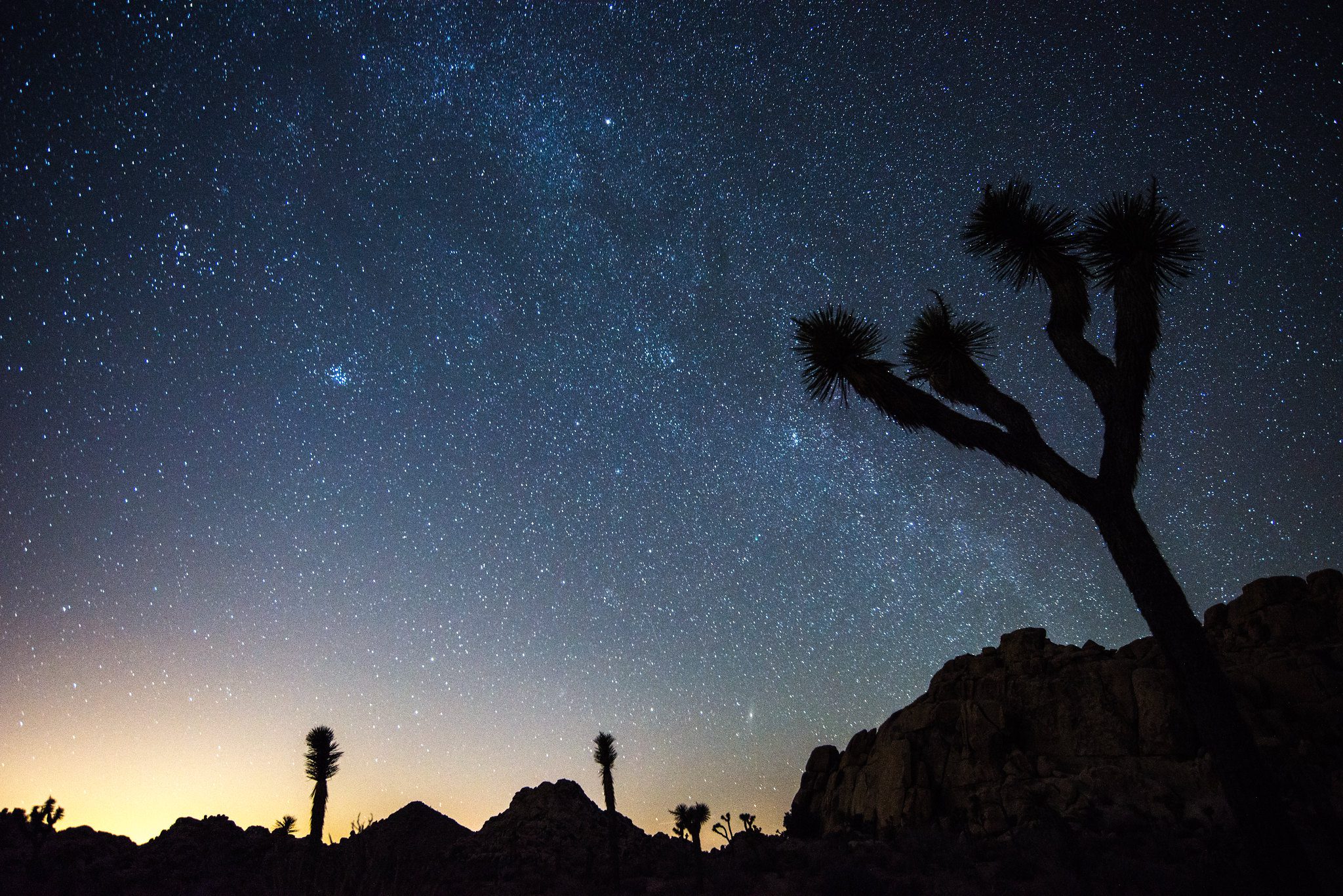
When one thinks of types of pollution that are affecting the Earth, some would name the more obvious: air, land, soil, water, the list goes on. But one form of pollution not discussed nearly enough is light pollution and how it can affect humans, animals, and the environment. Since the 1970s, astronomers have recognized light pollution as a problem in the United States. The excessive use of artificial outdoor light can have a negative effect on wildlife behavior, raise atmospheric carbon dioxide levels, disturb sleep, and obstruct the view of the stars at nighttime.
There are four different types of light pollution–glare, clutter, light trespass, and sky glow–all of which emit excess artificial light into the sky via car lights, billboards, large cities, etc. These lights have long-lasting effects on humans and animals alike. Aside from simply not being able to see the stars in the night sky, light pollution can harm nocturnal animals by disrupting their natural habits. It can also affect human’s natural habit of sleeping since the darker skies interrupt our circadian rhythms. This in turn can create more health problems due to a lack of sleep.
One major way that light pollution is different from other forms of pollution is that it is more easily reversible and there are many ways to reduce the emission of excess artificial light. Using less outdoor light, and more specifically using warmer colored lights (amber, yellow, or a warm-white), can greatly reduce light pollution. The use of bright white and blue lights like LEDs contributes to more light pollution because the light is scattered more in the atmosphere.
While certain energy-efficient lights have been shown to contribute to light pollution, a new study has come out from the DesignLights Consortium (DLC) that creates a strong case for energy efficiency programs to promote the use of exterior lighting products that meet the DLC’s LUNA Technical Requirements. LUNA qualified products are made to reduce energy usage and light pollution while at the same time increasing energy efficiency. The requirements under LUNA are that the product must be useful, targeted, have low levels of light, controlled, and use warmer colors.
Findings in this study suggest that LEDs with an energy-efficiency focus are not as likely to save energy as LUNA-qualified devices when combined with appropriate design and controls programming. Incentives for towns to select qualified goods could raise their return on investment and provide a financially practical approach for utility and energy efficiency projects.
The study found that these products have the potential to not only decrease excess artificial light emissions but save more energy than outdoor LED installations focused on energy efficiency alone. By using LUNA-qualified products, cities and towns can save power, reduce carbon emissions and light pollution, improve neighborhood quality of life, and protect the scenic beauty of our night skies.
Here at Scenic America, we see the night sky as our biggest scenic resource and want to ensure that others can view its profound beauty. It gets harder and harder to enjoy this natural wonder because light pollution is increasing every year. With DLC’s LUNA requirements, artificial outdoor light can greatly decrease due to its energy efficiency and solutions to decrease light pollution.
In an age where sustainability and energy efficiency are crucial, outdoor lighting projects have emerged as critical areas for improvement. Products that meet the LUNA Technical Requirements are a great step forward to having a more efficient use of energy and a great way to cut down on light pollution. This dual approach ensures that outdoor lighting systems fulfill their primary function while also protecting the health of our night sky and ecosystem.
But LUNA isn’t the only way to reduce artificial outdoor lights. Simply dimming lights, changing from white and blue lights to warmer tones such as yellow or warm-white, and turning off lights when necessary are all easy ways to reduce light pollution. The beauty of the night sky should be shared and viewed by everyone, so it is important to take the steps to try and better our big, wonderful sky.